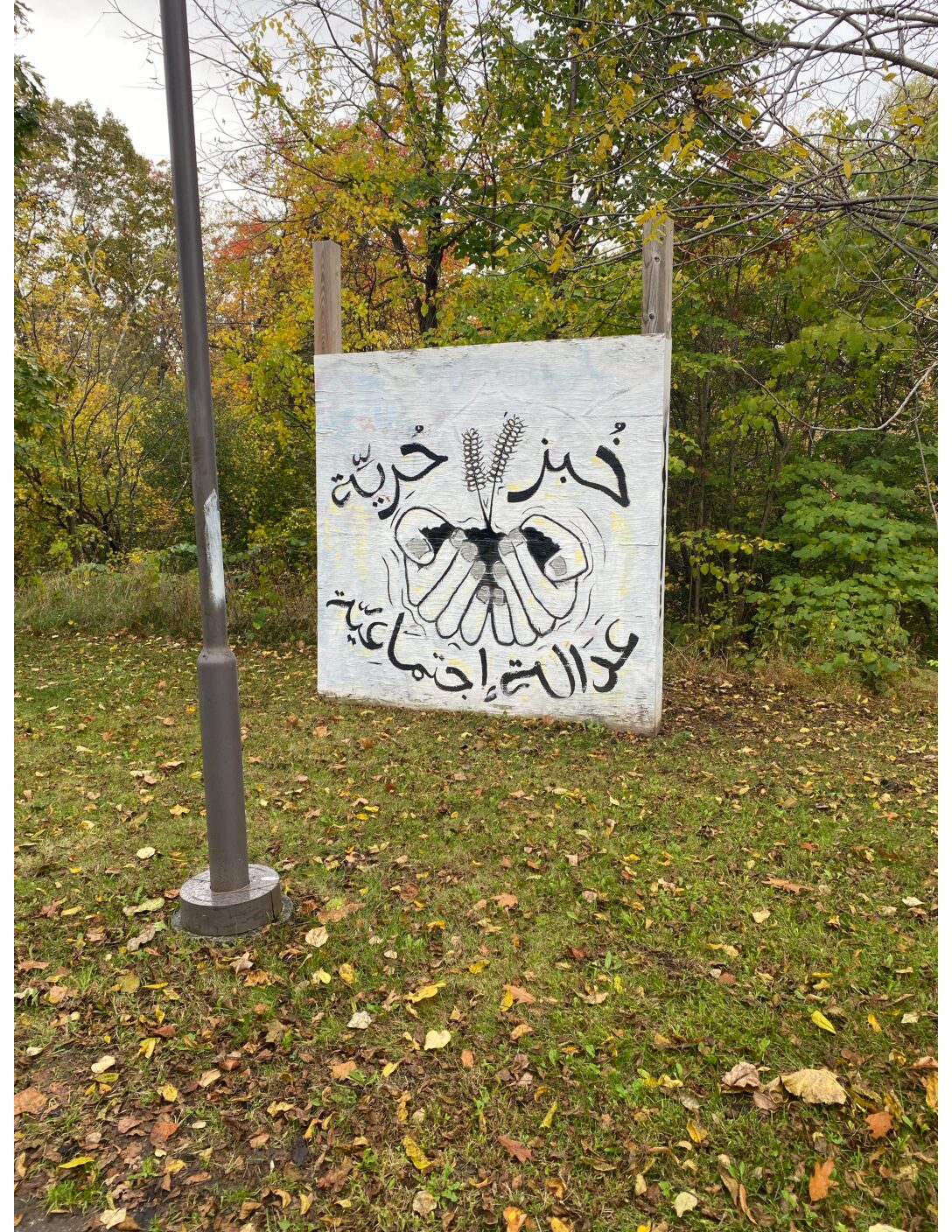The climate at Bard College, an institution known for its student activism, has been intense. Since the beginning of the war in Israel and Gaza, the Bard College SJP (Student for Justice in Palestine) has been active, inviting speakers and organizing events for the student body. In such a heightened and emotional time, especially on college campuses, it is important to understand the actions and goals of various parties involved, as well as what form their activism takes, so we can continue to facilitate healthy and open discussion moving forward.
To this effect, I recently sat down with a member of SJP to discuss the “die-in” that they helped organize on Thursday, November 9th and to clarify the goals of SJP moving forward. I wanted to gain a deeper understanding of the die-in, and clarify why they chose this unique form of protest. As a Jewish student at Bard, I was particularly interested in speaking with a Jewish member of SJP, as I continue to notice the variety of ways students’ Jewish backgrounds can affects their politics – particularly in the context of Israel and Palestine.
As the war continues, many students on campus have been looking for an outlet for their grief, as well as a way to do something that feels meaningful. However, constraints like social anxiety, institutional pressure, and blacklisting have made student activism extraordinarily difficult.
According to this student (who wished to remain anonymous), Bard College’s SJP seeks to find diverse ways of capturing this energy. “The energy of protest is vital,” the organizer stated, explaining that a focus on only traditional protests is not the most holistic approach to activism. They went on to say that traditional protests can be alienating to people who are neurodivergent or disabled. The loud sounds, yelling, and overall energy of a protest could be overwhelming to people who have sensory issues. For people with physical disabilities, who might use a mobility aid or have chronic fatigue, marching in a protest becomes difficult or impossible. This member of SJP went on to explain that people may also feel uncomfortable participating in a traditional protest due to the fact that they often carry the connotations of being violent or negative in some way.
“Protests can be alienating […] Protest has been stigmatized and has a negative connotation with violence. Institutions represent this, and so students who haven’t been part of protests are worried about repercussions.” For students who have not participated in peaceful protests in the past, they might not feel comfortable marching in a traditional protest. In the student body there is still, however, a drive to do something, to be active, to feel like you’re participating.
Out of this drive, the Bard College Die-In was born. The die-in, like the sit-in last month organized by Not In Our Name, was born out of a tradition of LGBTQ+, disability, and gun-control activism. For those who are not familiar with the practice, a “die-in” often consists of protestors laying in an area as if they were a collection of dead bodies. Sometimes these people are outlined in chalk echoing a body at a crime scene. The goal is to make the death of a group more immediate to whichever organization the group is protesting. For people with disabilities, this form of protest can be much more accessible than standard, demanding forms of mobile protest.
On the morning of November 9th, students in coats laid themselves in a row stretching 400 feet from the Registrar’s office to the main dining hall of the college. According to the SJP organizers, the goals of the die-in were fairly simple: SJP demanded fiscal transparency from the college so that students could better understand the institution’s spending. This came from confusion about Bard’s possible investments in Israel and Bard’s Al-Quds campus. SJP members put QR codes around the students, linking to forms to request information about the college’s finances. As this member of SJP said, the goal was to “disrupt campus life in a way that anyone could participate.” Within 48 hours they were granted a meeting with higher-ups in administration.
I asked this member of SJP what their goals were following the die-in and what they would like to see from the Bard student body as a whole. They said they wanted to see a student body that “understands their stake in the conflict,” namely where their tax and tuition dollars are going.
According to this member of the SJP, the main goal of SJP’s on campus activism is to demand fiscal transparency from the college so that students can make informed choices about where their money is going, to create an environment where students can safely create discomfort, and call for action from the administration. SJP also hopes to encourage a movement among college students based on the wants and needs expressed by Palestinian voices rather than the assumed wants and needs of Palestinians. In the words of this SJP member: “Palestine will liberate itself from within, I just want to help facilitate that as best I can.” According to this member, SJP’s goals are to help from afar, providing support through student action, raising awareness for the situation in Gaza, and calling for divestment.
The member I spoke to also held a deeply personal motivation for their role in SJP, born out of their Jewish upbringing. They talked about their actions as a form of tikkun olam, a Hebrew phrase meaning to “heal the world.” Coming from a Zionist family, this member of SJP considers themselves to be an “equal and opposite” force to their family’s activism, which functions to support Israel.
The member also mentioned the idea of l’dor v’dor, a Hebrew phrase meaning “from generation to generation”, as an essential part of their activism. Considering the ideal of generational continuity to social justice, students are asking: what are we, as Jews, receiving from our ancestors, and what do we want to pass down to the next generation?

